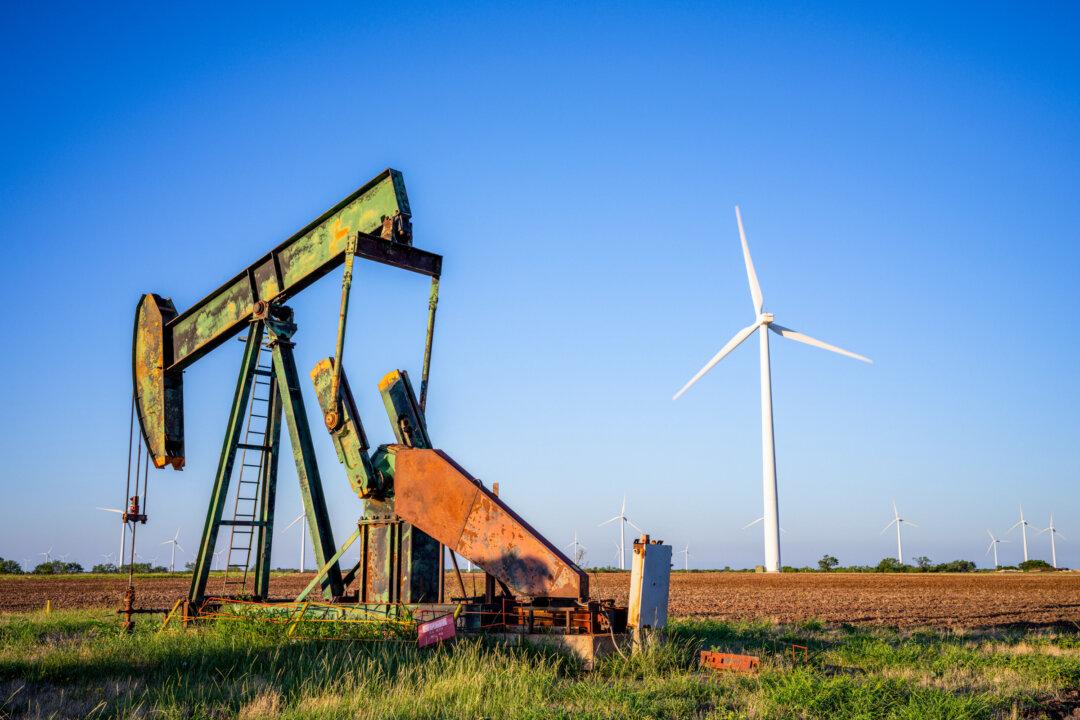Data center developers with shovel-ready projects that can be operating before 2028 have until May 7 to respond to the Trump administration’s call for locating on sites within Department of Energy properties.
Much is at stake, Wright said, because unless the United States can rapidly boot-up its capacity to generate and transmit electricity, it will “lose the AI race to China.”
The department’s Request for information offers developers sites on properties “uniquely positioned for rapid data center construction, including in-place energy infrastructure with the ability to fast-track permitting for new energy generation such as nuclear.”
Among the 16 properties are two defunct uranium gaseous diffusion plants and sites on national laboratories lands, including on Oak Ridge in Tennessee and on Los Alamos in New Mexico, key World War II technology hubs that produced the first atomic bombs.
“The global race for AI dominance is the next ‘Manhattan Project’ and, with President Trump’s leadership and the innovation of our national labs, the United States can and will win,” Wright said.
But first, they’ll need to plug in to power up.
Executives with several national regional transmission operators told a Senate panel on March 25 they’re uncertain they'll be able to generate the electricity these new data centers will need by 2028 without creating shortages and higher bills for existing customers.

Powering Up
The Federal Energy Regulatory Commission in February launched a review of issues related to co-locating large loads such as data centers at power plants—a solution that some data center developers have been pushing for several years with nuclear the preferred energy source.PJM Interconnect, Talen Energy, Constellation Energy, and PSEG Power are among transmission operators and energy companies considering proposals to have data centers built on, or near, nuclear power plants.
Examples include Amazon’s $650 million proposal to build a data center next to Susquehanna nuclear power plant in Berwick, Pennsylvania, and Constellation Energy partnering with Microsoft to reopen Three Mile Island nuclear plant in Harrisburg, Pennsylvania, more than 40 years after one of its reactors partially melted down.
Amazon, Microsoft, Google, Meta, Oracle, and OpenAI, among others, plan to spend billions on developing data centers fueled by small nuclear reactors that could be installed in plants to generate their own electricity.
Microsoft and Oracle—which has designed three small reactors—are among developers poised to provide their own nuclear energy sources.
The company is building data centers in Jeffersonville, Indiana; Rosemont, Minnesota; Montgomery, Alabama; Cheyenne, Wyoming; and Aiken, South Carolina.

Make A Deal
Among proposed data center developments that could be Department of Energy tenants is Stargate, a $100 billion joint venture between OpenAI, Softbank, and Oracle to build 10 data centers—each at least spanning 500,000 square feet—that Trump referenced on his third day in office.“Beginning immediately, Stargate will be building the physical and virtual infrastructure to power the next generation of advancements in AI,” he said in the Oval Office. “This will include the construction of colossal data centers—very, very massive structures.”
Trump pledged to trim permitting and shorten timelines to boost Stargate.
“I’m going to help a lot through emergency declarations, because we have an emergency, we have to get this stuff built,” he said. “So, they have to produce a lot of electricity, and we’ll make it possible for them to get that production done very easily, at their own plants if they want. They’ll build energy generation.”
Other department properties being offered for data development include land on the 310-square-mile Savannah River Site (SRS) near Aiken, South Carolina, and on 380 acres within the 25-square-mile Pantex Plant north of Amarillo, Texas, where nuclear weapons are assembled and disassembled.
The list includes 110 acres within the 6,800-acre Fermi National Accelerator Laboratory, which already operates one of the federal government’s largest data centers as one of five National Quantum Initiative Centers, and Brookhaven National Laboratory on the east end of New York’s Long Island, where 90 acres are available in its public-private BNL Discovery Park District.
The National Renewable Energy Laboratory in Boulder, Colorado, has the capacity to accommodate a large data center “as soon as this year,” according to the request, while Argonne National Laboratory outside Chicago could accommodate a massive 1,518-acre “data park” fully operating by 2028.
The department has 88 acres within Princeton Plasma Physics Laboratory’s 825-acre Forrestal Campus, and its National Energy Technology Laboratory research and technology hubs are offering 45 acres in Morgantown, West Virginia, and 50 in Pittsburgh.
At least five national laboratories are offering co-location sites for data center developers, including on 62,000 acres within 890-square-mile Idaho National Laboratory; 562 acres on Oak Ridge National Laboratory, less than five miles from the pending Tennessee Valley Authority Clinch River small modular reactor demonstration; 295 acres on the Pacific Northwest National Laboratory in Richland, Washington; and 40 acres adjacent to a power substation on Los Alamos National Laboratory.







